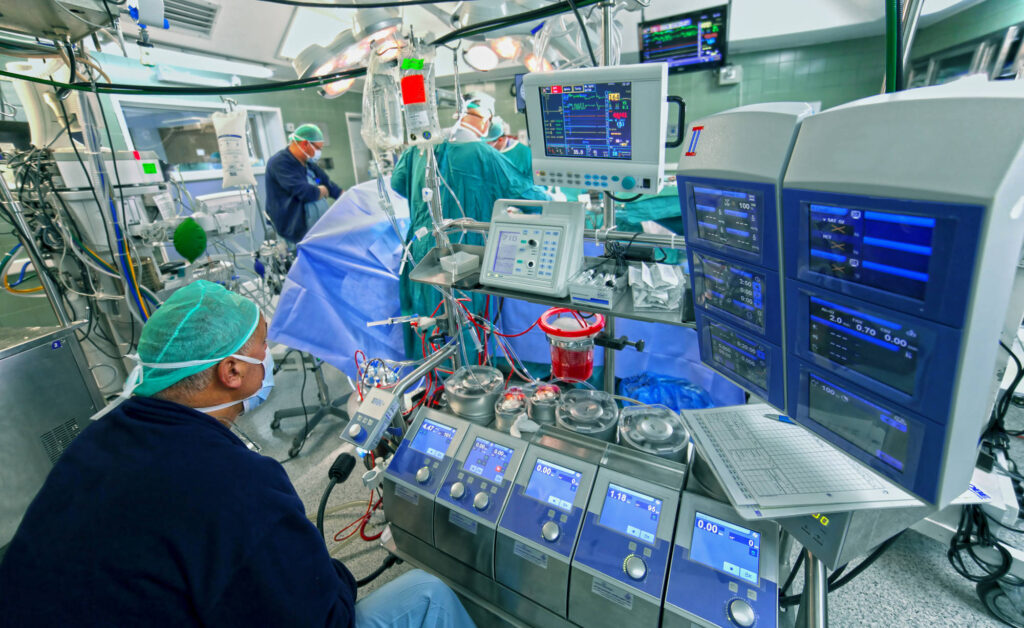In 1992, Medicare established a standardized payment scale called the Resource-based Relative Value Scale (RBRVS). While the system succeeded in standardizing rates, it also led to lower payments for some specialties. Anesthesia, in particular, suffered from a rate cut of nearly 30% between 1991 and 1992. Since then, Medicare payments for anesthesia services have amounted to around 33% of commercial rates.[1]
The original RBRVS was based on research by Hsiao et al. which relied heavily on cross-specialty comparisons for similar services. The study looked at three factors: work, practical expense, and professional liability insurance. In general, the researchers compared between 12 and 15 services. However, Hsiao and his team compared just 3 anesthesia services, which accounted for a fraction of the total services offered by anesthesiologists.[2] Ultimately, the researchers decided that anesthesiology services were overvalued by about 41%. As a result, the Medicare rates for anesthesia services were set at a markedly lower rate than other, similar services.
Between 1995 and 2005, the American Society of Anesthesiologists conducted three studies, each of which showed that Medicare rates for anesthesiology were consistently lower than rates for other specialties. The 1995 and 2000 studies both examined the estimated time required to complete a procedure and found it to be significantly undervalued for anesthesia services.
The duration of work performed by a medical specialist is one of the primary determinants for payment under the Medicare fee structure. However, studies have shown that physicians consistently overestimate the amount of time required for a procedure.[3] Anesthesia, however, is routinely undervalued. A 2000 study by the ASA estimated that anesthesia times were undervalued by between 28.4% and 37.6% in work Relative Value Units.
Indeed, some researchers point to the complexity of the RBRVS model as a failing in and of itself. Cooper and Kramer analyzed the RBRVS model and concluded that it was more complex and less effective version compared to other revenue-based cost assignment models.[4] The RBRVS system supposes that all procedures and providers earn the same profit margin, regardless of the scale or complexity of the medical environment. This can translate into standard payments for services that do not correspond to the time put in by the specialist.
The impact of Medicare rates resonates far beyond the system, as well. The RBRVS model has become more popular with third-party payers as they move from discount-based models to fee schedules. These payers, which include HMOs, use a multiplier linked to the Medicare RBRVS rate to assess their fees. According to Lubarsky and Reves, this results in substantially lower payments for anesthesiologists, not only from Medicare but also from many third-party payers.[5] Indeed, the authors’ study of two different HMOs found that, if Medicare-based multipliers are used, anesthesiologists would need to be paid roughly three times the Medicare rate in order to remain rate-similar with other specialties.
For almost thirty years, Medicare rates for anesthesia services have remained around 30% lower than similar services offered by other specialties. Multiple studies have demonstrated that this discrepancy is due to shortcomings in the model that establishes the Medicare fee schedule. The effects of these lower payments are felt beyond Medicare—third-party payers that use Medicare rates to set their own fee schedules also routinely underpay anesthesiologists for their services.
References
[1] Pregler, Johnathan, et al. “The 33% Problem: Origins and Actions Committee on Economics 33% Workgroup Report ASA Economic Strategic Plan Initiative—October 2020.” ASA Monitor, vol. 84, no. 12, 2020, pp. 28–33., doi:10.1097/01.asm.0000724064.38204.e5.
[2] Hsiao, William C. “Resource-Based Relative Values.” JAMA, vol. 260, no. 16, 1988, p. 2347., doi:10.1001/jama.1988.03410160021004.
[3] Burgette, Lane F., et al. “Estimating Surgical Procedure Times Using Anesthesia Billing Data and Operating Room Records.” Health Services Research, vol. 52, no. 1, 2016, pp. 74–92., doi:10.1111/1475-6773.12474.
[4] Cooper, Robin, and Theresa R Kramer. “RBRVS Costing: the Inaccurate Wolf in Expensive Sheep’s Clothing.” Journal of Health Care Finance, vol. 34, no. 3, 2008, pp. 6–18., PMID: 18468375.
[5] Lubarsky, David A, and J.Gerald Reves. “Using Medicare Multiples Results in Disproportionate Reimbursement for Anesthesiologists Compared to Other Physicians.” Journal of Clinical Anesthesia, vol. 12, no. 3, 2000, pp. 238–241., doi:10.1016/s0952-8180(00)00135-5.









